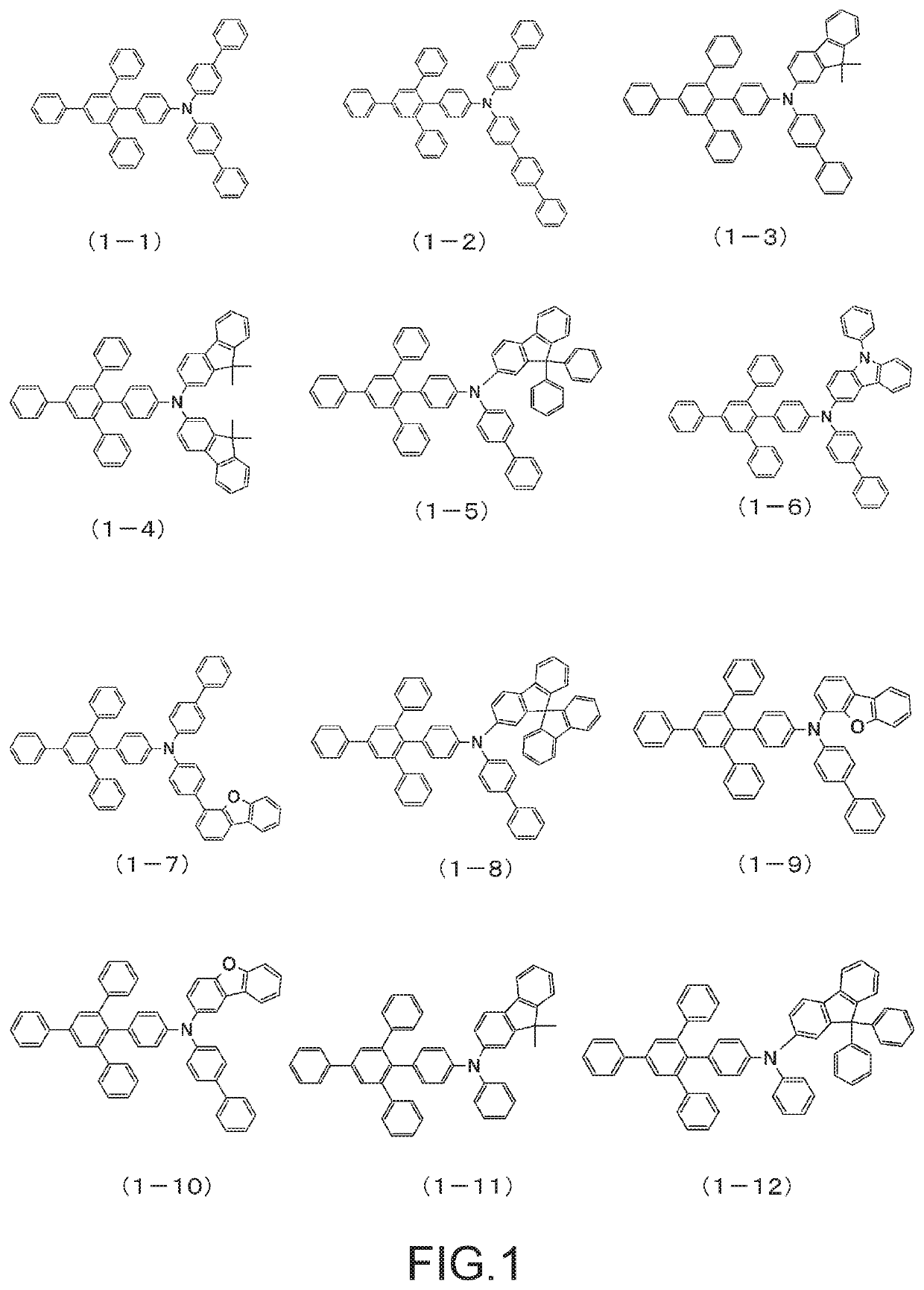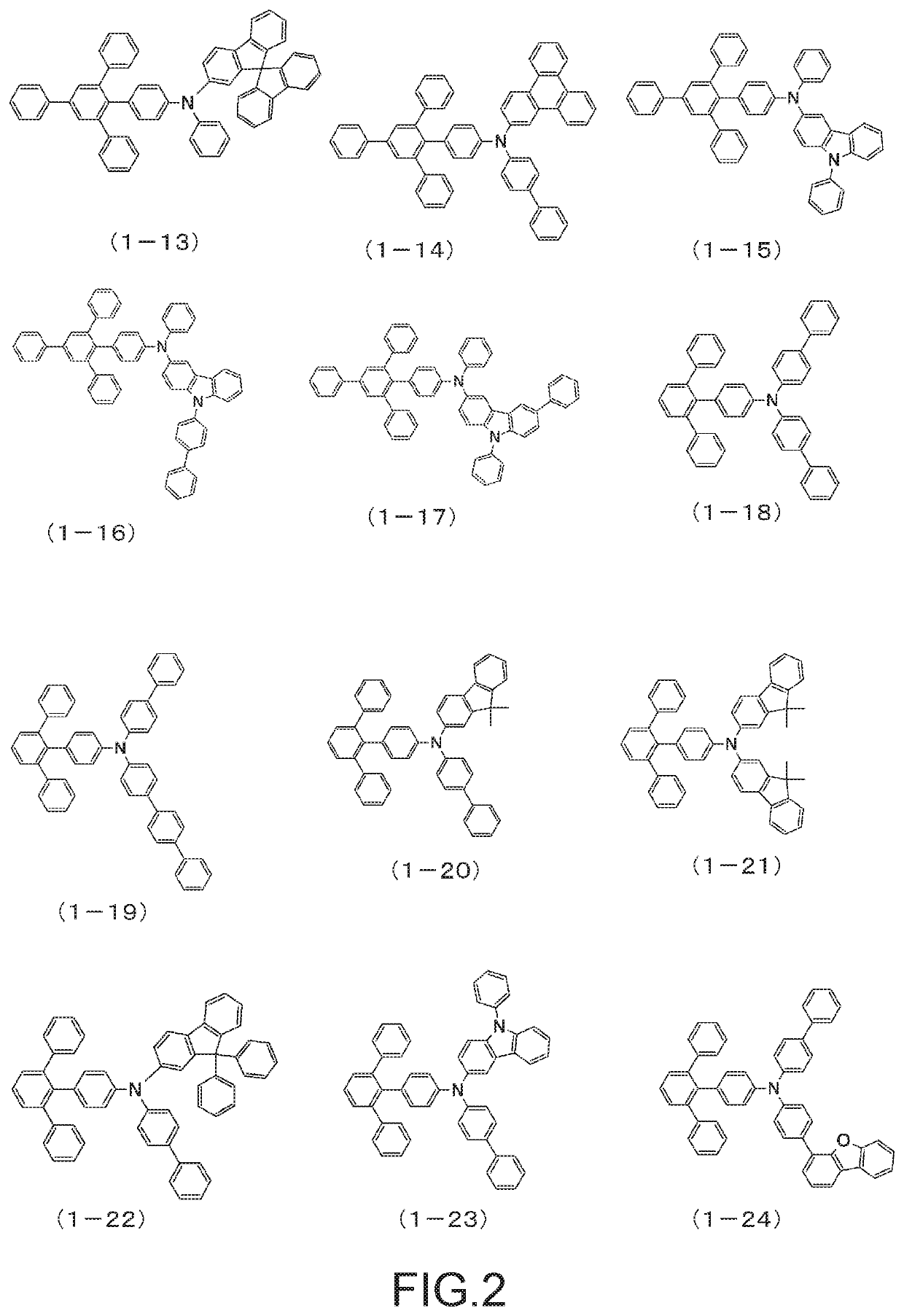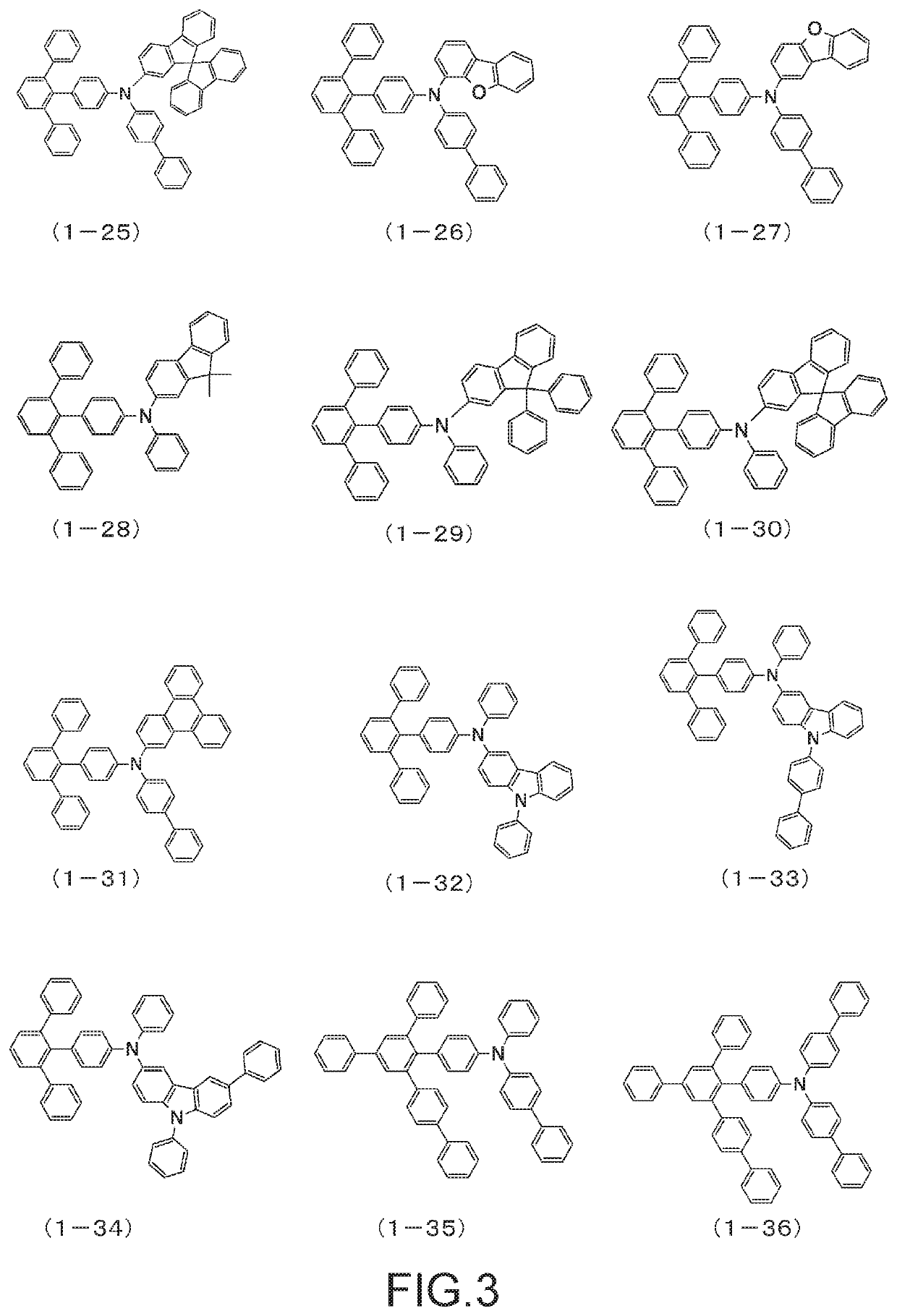Organic electroluminescence device
a technology of electroluminescence device and organic material, which is applied in the direction of organic semiconductor device, organic chemistry, indium organic compound, etc., can solve the problems of low hole mobility, electrical reduction durability, and rate-limiting supply of holes to the light-emitting layer, and achieve excellent hole injection/transport performance, excellent properties, and electron blocking performance.
- Summary
- Abstract
- Description
- Claims
- Application Information
AI Technical Summary
Benefits of technology
Problems solved by technology
Method used
Image
Examples
example 1
Synthesis of N,N-bis(biphenyl-4-yl)-N-[4-{(2,4,6-triphenyl)phenyl}phenyl]amine (Compound 1-1)
[0202]After adding 1,3,5-triphenylbenzene: 50.7 g and chloroform to a reaction vessel purged with nitrogen, bromine: 29.1 g was added thereto and the mixture was stirred for 16 hours at room temperature. After adding a saturated sodium sulfite aqueous solution thereto and stirring the solution, a liquid separation operation was performed thereon to collect an organic layer. The organic layer was dehydrated over magnesium sulfate and then concentrated under reduced pressure to obtain a crude product. Hexane was added to the crude product, and the mixture was dispersed and washed to obtain a white powder of 2-bromo-1,3,5-triphenylbenzene: 55.0 g (yield of 86%).
[0203]The obtained 2-bromo-1,3,5-triphenylbenzene: 5.0 g, 4-{N,N-bis(biphenyl-4-yl)amino}phenyl boronic acid: 6.9 g, tripotassium phosphate: 8.3 g, 1,4-dioxane: 90 ml, and water: 10 ml were added to a reaction vessel purged with nitrogen...
example 2
Synthesis of N-(biphenyl-4-yl)-N-(1,1′:4′,1″-terphenyl-4-yl)-N-[4-{(2,4,6-triphenyl)phenyl}phenyl]amine (Compound 1-2)
[0207]N-(4-bromophenyl)-4-biphenylamine: 38.0 g, 4-biphenylboronic acid: 25.5 g, potassium carbonate: 32.4 g, toluene: 3000 ml, ethanol: 76 ml, and water: 113 ml were added to a reaction vessel purged with nitrogen, and a nitrogen gas was bubbled for 30 minutes. Tetrakistriphenylphosphine palladium: 2.7 g was added thereto, and the mixture was heated and stirred at 73° C. for 5 hours. Water 100 ml was added thereto, and the precipitated solid was collected by filtration. o-dichlorobenzene was added to the obtained solid, and the mixture was dissolved by heating. After that, silica gel was added thereto, the mixture was stirred and then, hot filtration was performed thereon. The filtrate was concentrated under reduced pressure, and the precipitated solid was collected by filtration to obtain a yellow powder of N-(biphenyl-4-yl)-N-(1,1′:4′,1″ -terphenyl-4-yl) amine: 20...
example 3
Synthesis of N-(biphenyl-4-yl)-N-(9,9-dimethyl-9H-fluorene-2-yl)-N-[4-{(2,4,6-triphenyl)phenyl}phenyl]amine (Compound 1-3)
[0215]N-(biphenyl-4-yl)-N-(4-bromophenyl)-N-(9,9-dimethyl-9H-fluorene-2-yl)amine: 71.9 g and tetrahydrofuran: 360 ml were added to a reaction vessel purged with nitrogen, and the mixture was cooled to −78° C. A hexane solution: 100 ml of n-butyllithium (1.6M) was slowly added dropwise, and the mixture was stirred at the same temperature for 1 hour. Subsequently, trimethyl borate: 19 ml was slowly added dropwise and the mixture was stirred at the same temperature for 1 hour. After the temperature was raised to room temperature, the mixture was further stirred for 1 hour. Subsequently, a 1N aqueous hydrochloric acid solution was added thereto, and the mixture was stirred for 1 hour. After performing a liquid separation operation thereon to collect an organic layer, the organic layer was dehydrated with anhydrous magnesium sulfate and then concentrated under reduced...
PUM
| Property | Measurement | Unit |
|---|---|---|
| Time | aaaaa | aaaaa |
| Time | aaaaa | aaaaa |
| Time | aaaaa | aaaaa |
Abstract
Description
Claims
Application Information
 Login to View More
Login to View More - R&D
- Intellectual Property
- Life Sciences
- Materials
- Tech Scout
- Unparalleled Data Quality
- Higher Quality Content
- 60% Fewer Hallucinations
Browse by: Latest US Patents, China's latest patents, Technical Efficacy Thesaurus, Application Domain, Technology Topic, Popular Technical Reports.
© 2025 PatSnap. All rights reserved.Legal|Privacy policy|Modern Slavery Act Transparency Statement|Sitemap|About US| Contact US: help@patsnap.com



